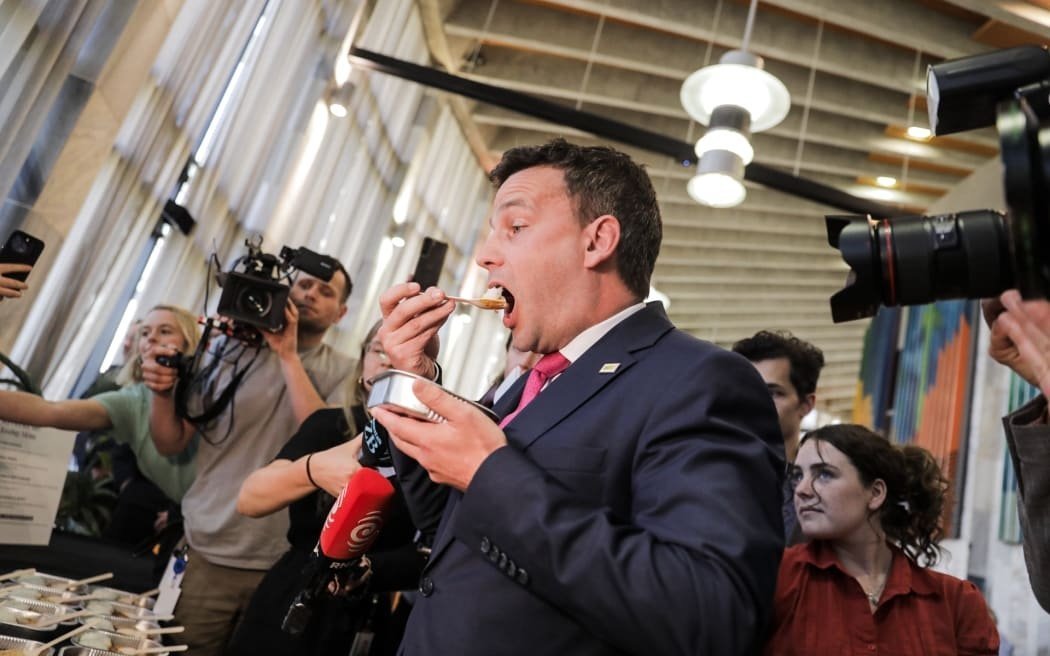

Decades on, some of my boring sandwiches, carefully captured in cling film, may possibly still be lurking in far corners of the garden where they were flung in disgust.
Their presence may be of interest to archaeology, but they will not do much for the environment. My apologies.
Eventually, I got so sick of discovering these plastic-wrapped monstrosities, I provided the ingredients and insisted they make their own lunches.
My thinking was if they had taken the time to make them, they would be more interested in eating them.
That worked, I think, unless unbeknown to me they became better at hiding the evidence of the uneaten.
I doubt their lunches were any more inspired.
Associate Education Minister David Seymour would no doubt approve of my own limited lunch choices. I don’t really care about lunch and was happy to eat Vegemite sandwiches (or Vegemite and lettuce) with fruit every day for years. Sometimes, I would break out with the extra of some home baking.
Such lunches would have been better than a pie, but I suspect would have fallen short of the nutritional standards for the Ka Ora Ka Ako school lunch programme.
Somehow, the reason for the programme seems to have been lost in the controversy around the awfulness of the move to cheap $3 meals and the problems in delivering them on time, or sometimes at all.
The programme is not frippery. It was introduced (and the old website used to state this clearly) because around one in five children in New Zealand live in households that struggle to put enough good-quality food on the table.
‘‘In communities facing greater socio-economic barriers, 40% of parents run out of food sometimes or often,’’ the website used to say.
‘‘Ka Ora, Ka Ako aims to reduce food insecurity by providing access to a nutritious lunch every day.’’
The programme was aimed at the 25% of students in schools and kura facing the greatest socio-economic barriers nationally.
In participating schools, all pupils receive the lunches, which stops any stigma being attached to pupils in a non-universal scheme.
I have waxed lyrical about the way the programme used to run in my old hometown, Murchison, with the local Beechwoods cafe providing appetising and nutritious meals (including woke sushi) in more than shades of brown. (When I asked one of the offspring what had happened to the adage about good nutrition involving eating the colours of the rainbow, he helpfully pointed out if you mix all the colours together you get brown. Give that man a job, David.)
The Murchison meals, now prepared in Hamilton, are heated in Tapawera (about 80km away), and, surprisingly, some are arriving too hot for pupils to access safely.
When the new programme started, the local principal found he was having to spend time delivering meals to pupils, food waste was left stinking at the school, and rubbish bags were left at the school over a weekend.
(The aluminium and soft plastic is supposedly recycled. I wonder who cleans it and how any recycling can be better than the Beechwoods’ arrangement which involved reusable containers washed at the cafe.)
Any spending on a lunch assistant would have to come out of the school’s operations grant.
The school board will be considering whether to continue involvement with the programme.
Mr Seymour’s attempts to airily dismiss the glitches with the roll-out of the cheap meals shows how far he is from understanding food insecurity.
Missing a lunch might not mean much to him, but it does to a child who might not have anything else to eat that day.
When principals were pointing out there were still issues, he said this: ‘‘I reckon if those principals were getting all of their school attendance and exam passes up to 95 to 100% within two weeks, they’d say that’s a success’’.
This pathetic deflection was nonsensical, as was his attempt to pass off last week’s pie day Friday as a celebration of the scheme (many children received pies rather than something meeting the nutrition rules because the system was not coping).
Then, he took a blunderbuss approach to questions raised about Halal food, declaring it too expensive to have Halal-certified kitchens, something the Federation of the Islamic Associations of New Zealand has taken issue with.
Mr Seymour can argue he is feeding more children for less money.
But it is debatable whether sacrificing quality, and the opportunity for most local communities to work out what was best for them, on the altar of big business will be a win for our children, and the environment, in the long run.
• Elspeth McLean is a Dunedin writer.












